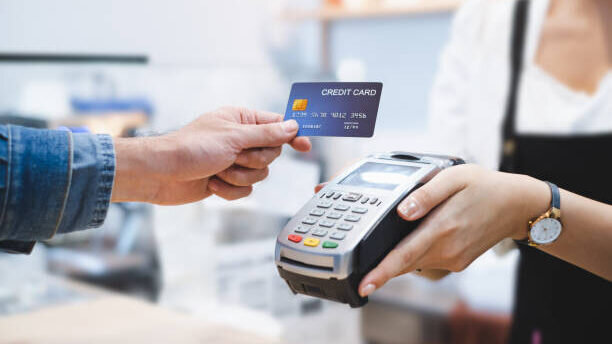Businesses are always in need of funds for their smooth operation. To help meet the business requirements of banks, NBFCs offer various financial tools such as lines of credit to meet business expenses. An overdraft facility is one such tool that allows the borrower to overdraw funds for their requirement up to a certain limit. However, another feature known as the Dropline Overdraft facility is similar to Overdraft with a few major differences. Let us know in detail about a Dropline Overdraft, its features, and who can avail of it.
What is a Dropline Overdraft?
The Drop-Line Overdraft (DLOD) allows businesses to withdraw funds from their current accounts up to a limit set by the bank. Due to the fact that you only pay interest on the amount you withdraw, overdrafts are one of the most efficient methods of borrowing
In all cases, dropline overdrafts are almost similar, except in new instances in which the limit is available. The withdrawal limit is reduced each month from the sanctioned limit. The interest rate is calculated daily and charged at the end of each month. Since you will only be charged for the amount used, you can always park your funds in a virtual account when not in use.
Important features of Dropline Overdraft:
- It can come in as both forms of loan i.e. Secured loan and Unsecured loan
- With an unsecured dropline overdraft, no collateral is required. However, a secured loan is provided with collateral based on the creditworthiness of an individual.
- DLOD is a hybrid between a term loan and an overdraft.
- It is only available for current accounts, so the amount is only credited to the current account from the bank.
- Like traditional loans, monthly repayments are not needed and the interest rate of Dropline overdraft is very low.
- The withdrawal limit reduces monthly from the sanctioned limit.
- Dropline overdraft facilities are not subject to end-use restrictions and can be used for other purposes like the purchase of a property, renovation of a house, medical emergency, marriage, business expansion or startup. Manufacturers, retailers, traders, and service providers benefit from DLOD.
- The interest rate is calculated on a daily basis as the money is withdrawn. It is charged only on a monthly basis.
- Renewals are not charged annually.
What are the eligibility criteria for availing Dropline Overdraft facility?
Business experience: Minimum of 2 years in current profession
Turnover: Minimum 30 lakhs to Maximum of 30 crs
Age: At the time of loan application, you must be at least 24 years old, and at the end of the loan term, you must be at least 70 years old
Stability of Residence/Office: To qualify for residence stability, either an office or residential property should be owned. In the case of rented accommodation, residence stability must last at least 12 months. However, this requirement does not apply if the office is relocating to an owned house. Therefore, office stability should last for a minimum of 24 months.
- The minimum income for individuals is 2.5 lakhs based on their ITRs for the last two years. The minimum cash profit for individuals should be Rs 3 lakhs for the last two years.
There is no restriction on who can apply for DLOD
- Owners of proprietorships, partnerships, or private limited companies with current accounts with a positive banking history
- Business maintaining their current account for a number of years
- Ideally, the business should have been operating for over three years and have a clean record.
- Additionally, banks may request audited balance sheets, and profit, and loss accounts from companies to facilitate overdraft limits
What documents are required for the Dropline overdraft loan?
Personal Documents
- A passport-sized photograph of each applicant and co-applicant is required with the application form
- Applicants and co-applicants PAN cards
- A voter ID, driving license, passport, or Aadhar card can be used as identification
- Documents that prove your address – a passport, a driver’s license, a voter identification card, a utility bill, or a telephone bill
Self-Employed Individuals / Sole Proprietorships
- Financial statements and audited ITRs for last three years- Balance Sheet and Profit & Loss A/C
- An annual bank statement for the borrower’s main account/s as indicated on the most recent Balance Sheet
- One-Year GST Returns
- Existing loan payment statement
Partnership Firms / Private Limited Companies
- Recent audited annual reports and financials of the past 2 years (Balance sheet, profit & loss accounts)
- One Year bank statement of the borrower’s main account/s as listed on his/her Balance sheet
- In the case of partnerships, the partnership deed is required
- For private limited companies, the Certificate of Incorporation
- GST returns of one year
- Statements of existing loan
Is there any facility that can help with the Dropline Overdraft facility?
There are many financial institutions that you can rely on for availing Dropline Overdraft facility. These institutions work for corporates raising the funds and work with transparency, confidentiality, and professionalism. So, if you are looking for a hassle-free experience with the funding you can reach out to some of the reputed financial institutions
FAQs
Q. I am a retailer and run a grocery store. Can I avail Dropline Overdraft facility?
Ans. As long as your creditworthiness and business needs are met, you can get a Dropline Overdraft if you are a retailer, trader, or manufacturer.
Q). Is maintaining a high credit score necessary, if I want to avail Dropline Overdraft facility?
Ans. Keeping a high credit score is always advisable since this facility is like a loan. Creditworthiness and repayment capacity are therefore key criteria for borrowers of cure loans.
Q. Are there any collaterals required before taking the Dropline Overdraft facility?
Ans. Dropline overdrafts are available in both secured and unsecured forms, so collateral is required for secured loans.
Q. What is the maximum borrowing limit sanctioned by banks or NBFCs?
Ans. Minimum and maximum borrowing limits vary based on the applicant’s profile, business requirements, financial history, repayment ability, and creditworthiness.
Q. What makes Dropline Overdraft different from an overdraft facility?
Ans. The sanctioned borrowing limit in an overdraft facility remains the same or does not change until the limit is reached. In Dropline Overdraft, the withdrawal limit reduces each month from the sanctioned amount.
Q. How much interest will be charged on the borrowed amount?
Ans. Monthly interest charges are calculated on a daily basis.




